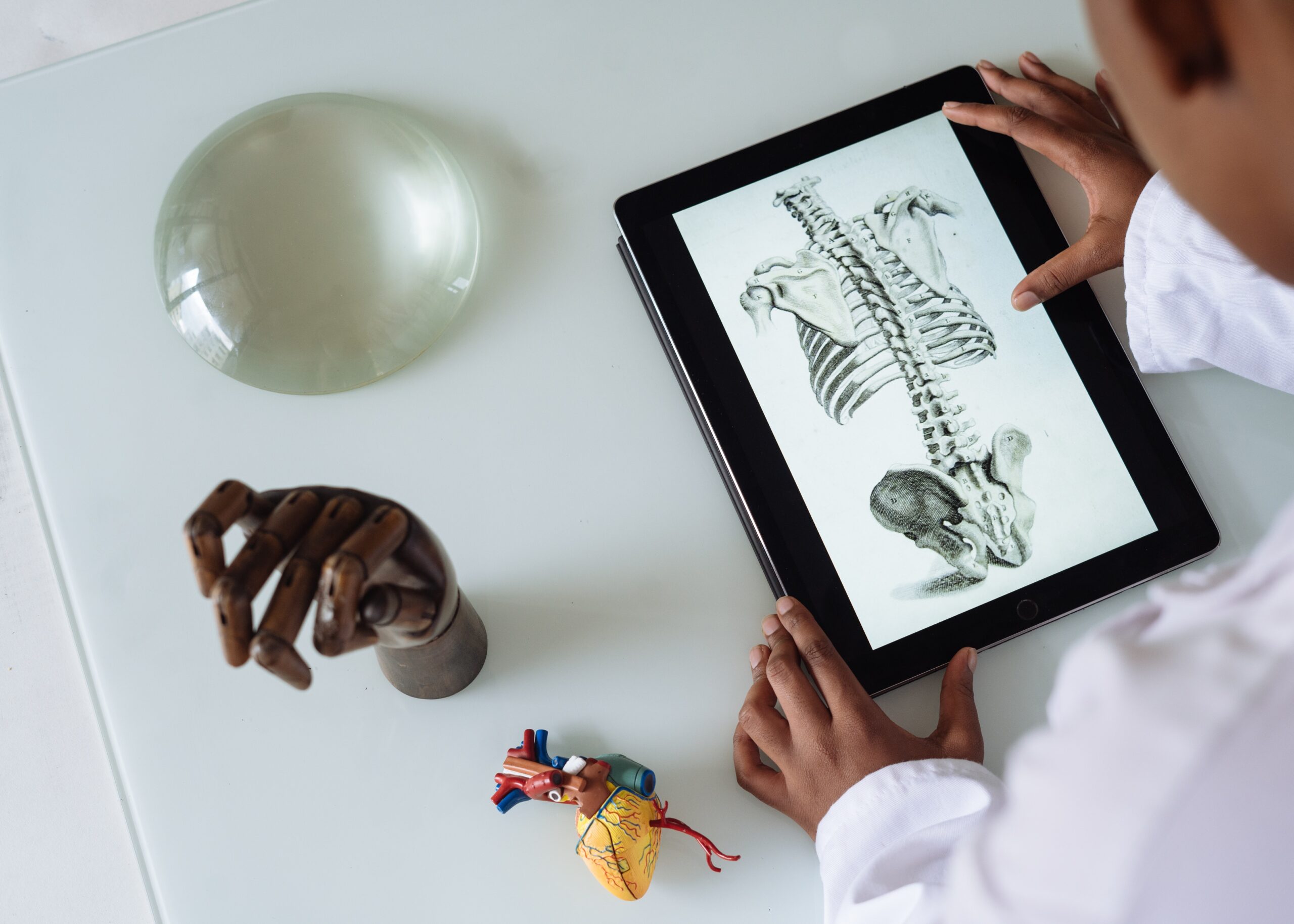Anabolic steroids have long been associated with the realm of sports and bodybuilding, where their performance-enhancing properties have garnered both fascination and controversy. However, recent research has unveiled a new dimension to their potential: revolutionizing rehabilitation and tissue regeneration. While historically recognized for their ability to promote muscle growth and strength, anabolic steroids are now being explored for their capacity to expedite recovery, heal tissues, and enhance the body’s natural regenerative processes. This article delves into the mechanisms behind anabolic steroids, their application in rehabilitation, their impact on tissue regeneration, ethical considerations, and promising future directions.
Mechanism of Action of Anabolic Steroids
Anabolic steroids exert their effects primarily through their interaction with androgen receptors. This interaction triggers a cascade of events that result in anabolic (tissue-building) and androgenic (masculinizing) effects. By binding to these receptors, anabolic steroids stimulate protein synthesis and inhibit protein degradation, thereby promoting the growth of various tissues, including muscle fibers. This ability to enhance cellular repair and growth forms the foundation for their potential in rehabilitation and tissue regeneration.
Anabolic Steroids in Rehabilitation
In the context of rehabilitation, anabolic steroids hold promise in addressing muscle-wasting conditions that arise from factors such as aging, chronic illnesses, and extended bed rest. Age-related sarcopenia, characterized by the gradual loss of muscle mass and strength, can significantly impair an individual’s functional abilities. Anabolic steroids have shown potential in mitigating this decline by promoting muscle protein synthesis and increasing muscle fiber cross-sectional area. Similarly, patients grappling with chronic illnesses like cancer or HIV/AIDS often experience muscle wasting as a side effect of their conditions.
Anabolic steroids offer a means to counteract this debilitating consequence, aiding in maintaining muscle mass and functional capacity.
Beyond combating muscle wasting, anabolic steroids play a crucial role in facilitating recovery after surgeries and injuries. They contribute to collagen synthesis, an essential component of tendon and ligament repair. By enhancing collagen production, anabolic steroids accelerate tissue healing, thereby reducing the time needed for rehabilitation. Furthermore, their ability to stimulate muscle regeneration contributes to faster functional recovery and improved overall outcomes.
Tissue Regeneration and Repair
Anabolic steroids’ potential in tissue regeneration extends beyond their impact on muscle tissue. Research suggests that they can influence stem cell differentiation, particularly promoting myogenic differentiation, which aids in muscle repair and regeneration. Additionally, anabolic steroids hold promise in guiding osteogenic and chondrogenic differentiation, suggesting applications in bone and cartilage repair.
The interaction between anabolic steroids and the immune system also plays a pivotal role in tissue repair. Anabolic steroids have been found to modulate cytokine production and influence macrophage polarization, which is essential for orchestrating the inflammation and resolution phases of tissue repair. This modulation contributes to a balanced immune response, aiding in optimal tissue regeneration.
Ethical and Safety Considerations
While the potential of anabolic steroids in rehabilitation and tissue regeneration is exciting, ethical and safety concerns remain paramount. The misuse and abuse of these substances, particularly in the context of sports and aesthetics, pose significant risks. Athletes seeking unfair advantages and individuals pursuing cosmetic enhancements can expose themselves to adverse health effects and legal repercussions.
The adverse effects of anabolic steroids include cardiovascular risks such as hypertension and increased cholesterol levels, hormonal imbalances that can lead to infertility and mood disorders, and strain on the liver and kidneys. Proper medical supervision is crucial to ensure responsible use, tailored dosages, and monitoring for potential complications and drug interactions.
Case Studies and Research Findings
Numerous clinical trials have explored the use of anabolic steroids in rehabilitation settings. These trials have shown improvements in muscle strength, functional capacity, and quality of life for patients with conditions such as cancer-related cachexia and hip fractures. Animal studies further emphasize anabolic steroids’ potential in tissue regeneration, showcasing their ability to enhance muscle repair and bone healing.
Comparative research with other regenerative therapies, such as growth factors and stem cell treatments, highlights anabolic steroids’ distinct mechanisms and potential advantages. Combining these therapies could potentially yield synergistic effects, opening new avenues for enhancing rehabilitation and tissue regeneration outcomes.
Future Directions and Potential Applications
The future of anabolic steroids in rehabilitation and tissue regeneration holds exciting possibilities. Ongoing advancements in the field could lead to the development of novel derivatives that maximize their regenerative potential while minimizing side effects. Combining anabolic steroids with targeted delivery systems could further optimize their effects while reducing the risk of systemic adverse effects.
Research efforts may also focus on elucidating the precise mechanisms through which anabolic steroids influence stem cell differentiation and immune response modulation. This deeper understanding could lead to more refined and effective therapeutic approaches.
Conclusion
Anabolic steroids, once synonymous with athletic prowess, are now emerging as agents of healing and regeneration. Their potential to combat muscle wasting, expedite recovery, and enhance tissue regeneration holds promise for a range of medical applications. However, the ethical use and responsible administration of anabolic steroids cannot be understated. As research advances, these substances may contribute significantly to the future of rehabilitation and regenerative medicine, offering new hope for patients seeking to regain their strength and vitality.
QNA
Q1: What are anabolic steroids, and how have they traditionally been used?
Anabolic steroids are synthetic derivatives of the male sex hormone testosterone. Traditionally, they have been used in sports and bodybuilding to enhance muscle growth, strength, and athletic performance. However, recent research has unveiled their potential applications in rehabilitation and tissue regeneration.
Q2: How do anabolic steroids work at a cellular level?
Anabolic steroids exert their effects by binding to androgen receptors in cells. This interaction triggers a series of biochemical events that promote anabolic (tissue-building) and androgenic (masculinizing) effects. This includes stimulation of protein synthesis and inhibition of protein degradation, leading to increased muscle growth and tissue repair.
Q3: How are anabolic steroids being applied in rehabilitation settings?
Anabolic steroids are being explored for their role in treating muscle-wasting conditions such as age-related sarcopenia and muscle loss associated with chronic illnesses like cancer and HIV/AIDS. They have also shown the potential in accelerating recovery after surgeries and injuries by enhancing collagen synthesis, muscle regeneration, and overall tissue healing.
Q4: What is the potential impact of anabolic steroids on tissue regeneration?
Anabolic steroids influence stem cell differentiation, particularly promoting myogenic (muscle-forming) differentiation. This property aids in muscle repair and regeneration. Moreover, anabolic steroids modulate immune responses and inflammation, contributing to optimal tissue repair processes.
Q5: What ethical concerns and safety considerations surround the use of anabolic steroids?
The misuse and abuse of anabolic steroids, particularly in sports and for aesthetic purposes, raise ethical concerns. Athletes seeking unfair advantages and individuals pursuing cosmetic enhancements can face adverse health effects and legal consequences. Adverse effects of anabolic steroids include cardiovascular risks, hormonal imbalances, and strain on organs like the liver and kidneys.
Q6: Can you provide examples of successful applications of anabolic steroids in rehabilitation?
Clinical trials have demonstrated the efficacy of anabolic steroids in improving muscle strength, functional capacity, and quality of life in patients with conditions such as cancer-related muscle wasting and hip fractures. Animal studies have also shown enhanced muscle repair and bone healing with anabolic steroid use.
Q7: How do anabolic steroids compare to other regenerative therapies?
Anabolic steroids offer distinct mechanisms for promoting tissue regeneration compared to other regenerative therapies like growth factors and stem cells. Combining these approaches could potentially yield synergistic effects, leading to enhanced rehabilitation and tissue regeneration outcomes.
Q8: What does the future hold for anabolic steroids in rehabilitation and tissue regeneration?
The future holds promise for advancements in anabolic steroid derivatives that maximize regenerative potential while minimizing side effects. Targeted delivery systems and a deeper understanding of their mechanisms could further optimize their therapeutic benefits. Anabolic steroids could potentially play a significant role in the future of rehabilitation and regenerative medicine.
Q9: What is the overall message regarding anabolic steroids in rehabilitation and tissue regeneration?
Anabolic steroids have transitioned from being associated solely with performance enhancement to being recognized for their potential in healing and regeneration. Responsible use under proper medical supervision is crucial to harness their benefits while minimizing risks. As research progresses, anabolic steroids could emerge as valuable tools for enhancing recovery and promoting tissue regeneration in various medical contexts.
Author

Dr. Aditya K. Sharma
I am Dr. Aditya Sharma, a dedicated urologist specializing in kidney transplants and advanced urological surgeries. My career is driven by a passion for delivering exceptional care and pioneering surgical techniques. Outside the operating room, I have a keen interest in studying the effects of anabolic steroids on bodybuilding, seeking to understand the fine line between enhancing performance and maintaining health.







